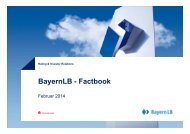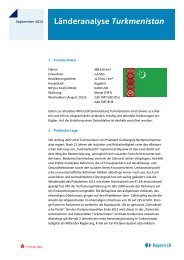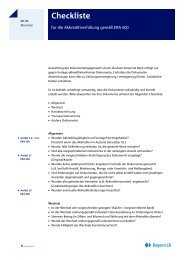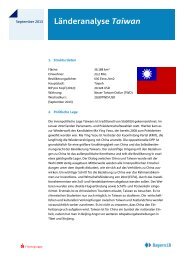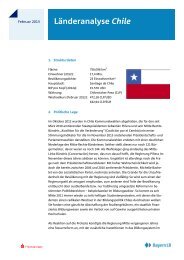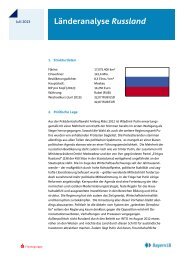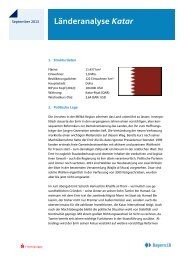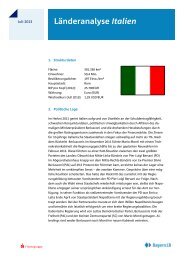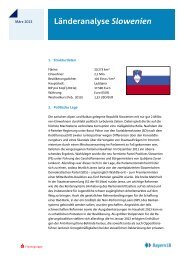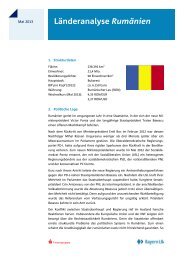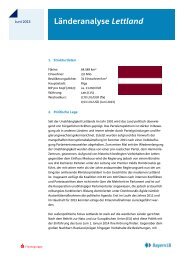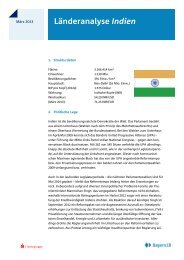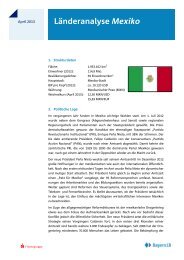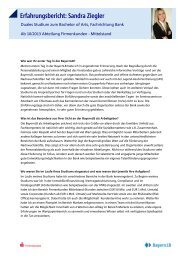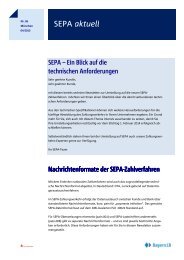A4 für Copyshop GB.indd - Bayerische Landesbank
A4 für Copyshop GB.indd - Bayerische Landesbank
A4 für Copyshop GB.indd - Bayerische Landesbank
You also want an ePaper? Increase the reach of your titles
YUMPU automatically turns print PDFs into web optimized ePapers that Google loves.
108 Report on the Bank and the Group<br />
} Bank-wide balance<br />
sheet analysis and<br />
early detection<br />
systems<br />
} Customer and<br />
portfolio limits<br />
} Limiting risk<br />
clusters<br />
} Collateral<br />
} Credit risk model<br />
} RORAC<br />
With a view to improving credit rating assessment, a uniform balance sheet analysis<br />
system was introduced throughout the Bank, comprising all of the major accounting<br />
standards (H<strong>GB</strong>, IAS, US-GAAP etc.). This system is being enhanced by the addition of<br />
budgeted balance sheets and forecasts of future balance sheet changes. Furthermore,<br />
the early detection procedure was revised and harmonised. The “intensive care” and<br />
“handling of problem loans” sub-processes were also redesigned and adjusted to meet<br />
these requirements.<br />
BayernLB limits potential losses depending on the risk profile of each product group<br />
using approaches guided by book value or market value. As well as setting limits at<br />
business partner level, the Bank carries out risk controlling at portfolio level with the<br />
help of a target portfolio. Portfolio structure limits are thus defined, e.g. for sector,<br />
country or rating category. Concentration risks in particular are taken into considera-<br />
tion. A cluster limit is determined for each borrower or liability relationship. The target<br />
portfolio is projected over several years, subjected to continual revision and, if neces-<br />
sary, changed in line with evolving business environments.<br />
Losses resulting from a counterparty’s default are fundamentally limited by the<br />
assumption and risk-oriented structuring of collateral customary in banking business.<br />
In derivatives trading, master agreements are usually concluded for the purpose of<br />
close-out netting. Some collateral agreements restrict the default risk associated with<br />
individual trading partners to an agreed maximum and authorise the call for (addi-<br />
tional) collateral should this maximum be exceeded.<br />
In 2004, the framework for calculating expected loss was significantly enhanced by the<br />
introduction of new scorecard and simulation rating methods. Furthermore, “loss<br />
given default” values (statistical loss amount in a given case of default), calculated as<br />
part of the project undertaken jointly by several German landesbanks, significantly<br />
enhance the calculation of expected losses arising from specific transactions. In order<br />
to cover unexpected loss, risks are backed by an appropriate amount of capital.<br />
In 2004, with a view to safeguarding the Bank’s return / performance, the RORAC<br />
(return on risk adjusted capital) ratio was introduced. In the current year, it was<br />
adopted for overall portfolio management. Thus, the income from a transaction, cus-<br />
tomer relationship or business area is now determined relative to the risk capital uti-<br />
lised.<br />
In the year under review, credit exposure in the Group was decreased by around EUR<br />
0.9 billion (by EUR 7.2 billion at Bank level). In addition to the lacklustre economic<br />
trend and concomitantly lower demand for credit, this was attributable to initiatives<br />
aimed at decreasing clusters and concentrations in the credit portfolio.



